Electric vehicles have so many advantages over cars powered by internal combustion engines (ICE). While the instant acceleration, lack of tailpipe emissions and low energy costs are well-known, there are plenty more. Here are nearly 70 reasons why driving an electric vehicle beats a conventional ICE vehicle:
Performance
1. Better acceleration. Electric motors can generate maximum torque from zero rpm. This means much faster acceleration from a standstill than similarly powered ICE vehicles. In 2021, the slowest Tesla available in Australia – the Model 3 Standard Range Plus – accelerates from 0-100kph in 5.6 seconds.
2. Instant acceleration. No waiting for an engine to start, gearbox to change or revs to rise. As soon as you push the accelerator, the electric motor(s) respond immediately.
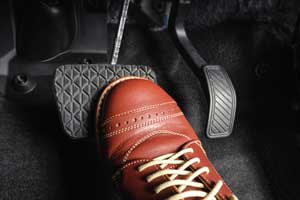
3. Lower centre of gravity. EV batteries can be situated lower in the vehicle than internal combustion engines, improving cornering and reducing the risk of rollovers.
4. Performance is unaffected by altitude. In comparison, power drops in ICE vehicles due to lower oxygen at high altitudes.
5. Leave home every day with maximum range. Charging at home means your ‘tank’ can be full every day.
6. EVs require much less cooling than ICE vehicles. This removes the need for large radiator grills, improving aerodynamics and styling.
7. Regenerative braking captures vehicle energy when slowing down, which recharges the battery. It also allows ‘single-pedal driving’ where the vehicle comes to a stop without using the brake pedal.
8. Up to 8x more efficient than petrol or diesel vehicles.
9. Cruise control in electric vehicles is extremely precise. This holds EVs at the selected speed aided by regenerative braking when going downhill and precision power control on uphills. Most ICE vehicles run over the selected speed on descents and fall below the selected speed on uphills.
Comfort and Convenience
13. Plugging in at home, work, and public charging stations takes < 20 seconds, less time than it takes to pump and pay for fuel.
14. Never waste time looking for the cheapest petrol station.
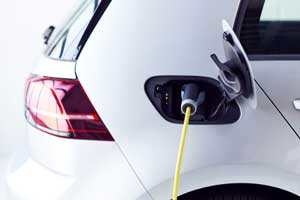
15. Buy a portable air inflator for your car tires, and you’ll never need to visit a smelly service station again.
16. No need to spend time warming up your engine. Just get in and go.
17. Less brake dust on wheels due to the use of regenerative braking rather than brake pads.
18. No chance of oil stains on the garage floor.
19. No stains on the vehicle near the tailpipe from dirty exhausts.
20. The smooth, quieter drive makes electric vehicles feel more luxurious and calming.
21. EVs won’t wake up your family or neighbours when coming home late at night or leaving early in the morning.

23. Get closer to nature. You’ll see and hear more wildlife when cruising through national parks and reserves in a quiet EV.
24. Stay comfortable at drive-in movies or on car ferries by running heating and cooling without running an engine.
Financial
25. Charge up for a fraction of the cost of fuel (10-40 cents per litre when charging from solar PV or off-peak electricity).
26. Pay for energy up to 3 months later (when you have quarterly electricity billing).
27. Stable fuel prices. Retail electricity prices change once or twice a year, not like petrol or diesel which changes once or twice per week.
28. Charge your EV through your own rooftop solar PV.
29. Increases the return of your solar PV system when you charge your EV with excess solar rather than exporting to the grid.
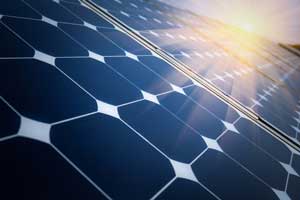

34. Lower servicing costs due to far fewer serviceable components.
35. No oil changes.
36. No mufflers to fall off or replace.
37. No spark plugs to change.
38. Regenerative braking reduces the use of brakes. Expect brake pads and discs to last far longer than in ICE vehicles.
39. Some EV makers allow their vehicles to not be serviced without voiding the warranty
40. Lower maintenance costs due to the simplicity of the motor design. EV’s have fewer moving parts than ICE vehicles, so there’s less to wear out and replace in the future.
41. Many EVs have a lower Total Cost of Ownership (TCO) than petrol or diesel equivalent after 10 years, e.g. Tesla Model 3 versus BMW 3 series or Mercedes C Class, Mitsubishi Outlander PHEV versus Petrol etc.
42. There is no excise tax charged on electricity.

Financial
44. Safer due to the ability to position motors between wheels, increasing front and rear crumple zones.
45. EVs are ~9 times less likely to be involved in a vehicle fire than ICE vehicles. Recent data shows one fire per 273 million kms travelled in an EV versus 1 in 30 million kms for ICE vehicles . Because batteries can be placed between the front and rear wheels, they are less likely to be damaged in an accident compared to petrol tanks.
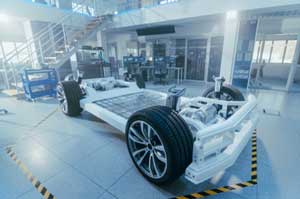
46. No chance of your EV catching fire if you park it above dry grass. Unlike hot ICE cars.
47. No emitting of burning pieces of carbon from car exhaust that can start bushfires.
48. EVs can be safely used indoors or underground because they don’t produce carbon monoxide or carcinogenic gases (parking complexes, commercial buildings, mining etc.)
49. You can safely and legally use your mobile phone when charging your EV. Don’t try that in a petrol station!
50. No hot exhaust pipe to burn you when getting items out of the boot or when washing the car.
51. Never spill petrol or diesel on your hands, shoes or car when filling up.
52. Reduces the supply chain for fuel. Fewer fuel trucks, refineries and oil tankers mean fewer fuel truck explosions, refinery emissions and oil spills.
Community Health & Wealth

54. No risk of oil spills. Electricity can be transported from generating source to EV charging station in a fraction of a second in power cables over land or under the sea.
55. No tailpipe emissions. Say goodbye to carbon dioxide, carbon monoxide or carcinogenic (cancer-causing) emissions such as benzene and 1,3-butadiene.
56. EVs have far lower “well to wheel” emissions than petrol vehicles. Even in states with a higher portion of coal-powered generation, EV’s are still much cleaner than fossil fuel vehicles.
57. EVs get ‘cleaner’ while ICE cars get dirtier over time. That’s because Australia’s electricity grid is using increasing amounts of renewable energy, reducing overall emissions. Meanwhile, ICE vehicle emissions get worse over time as parts wear out and efficiency falls.

59. Reverse your EV in your garage without filling it with exhaust fumes.
60. EV’s support increased renewable generation and reducing fossil fuel generation and emissions. EV owners can use excess renewable sources like solar or wind while plugging in at home or work.
Features
61. Cabin and seat heating and cooling can be turned on remotely via a phone app.
62. EVs can support vehicle pre-conditioning. Pre-setting climate control, seat heating etc to optimise passenger comfort and battery heating to maximise vehicle performance, fast charging and regenerative braking.
63. More storage space is available in EV chassis designs. Expect front trunks and deeper storage in the boot.
64. More hide and seek spots for the kids due to the extra storage in EVs.
65. EVs can be more easily designed to operate in semi-submerged conditions. This is because they don’t require an air intake or exhausts to operate. EV off-roaders won’t need giant snorkels.
66. No transmission tunnel under the floor provides more foot room than conventional RWD ICE vehicles.
67. Automatically upgrades. Vehicle performance, range, safety and other features can be improved and added through Over The Air (OTA) updates. No need to visit a dealership.
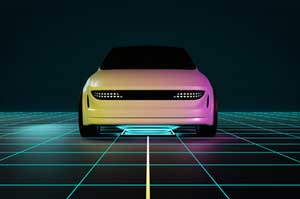
67. Remote vehicle access allows electric vehicles to be tracked and stopped in the case of theft. This means stolen EVs are more likely to be recovered.

